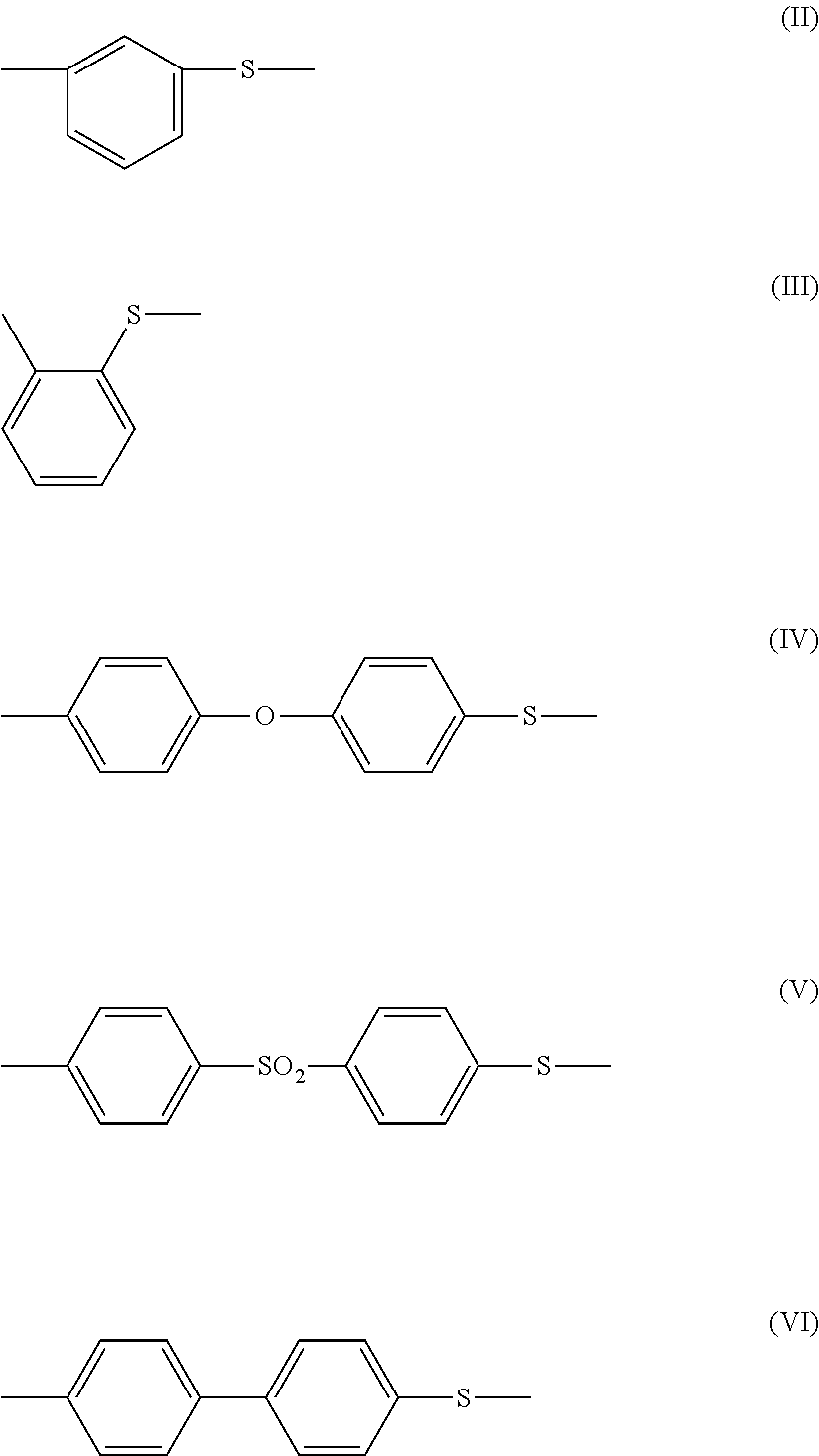Polyamide resin composition
a polyamide resin and composition technology, applied in the field of polyamide resin composition, can solve the problems of low dimensional stability due to water absorption, difficult to use conventional aliphatic polyamide, and known aliphatic polyamide, and achieve high heat resistance and dimensional accuracy, excellent in a variety of physical properties, and low water absorption and moldability.
- Summary
- Abstract
- Description
- Claims
- Application Information
AI Technical Summary
Benefits of technology
Problems solved by technology
Method used
Image
Examples
synthesis example 1
[0103]8,950 g (44.25 mol) of sebacic acid, 12.54 g (0.073 mol) of calcium hypophosphite, and 6.45 g (0.073 mol) of sodium acetate were weighed accurately and fed to a reaction container having an inner volume of 50 L and equipped with a stirrer, a dephlegmator, a cooler, a thermometer, a dropping device, a nitrogen inlet tube, and a strand die (a molar ratio between a phosphorus atom in calcium hypophosphite and sodium acetate was 0.5). Air in the reaction container was sufficiently replaced with nitrogen, and the container was pressurized with nitrogen to 0.3 MPa and heated with stirring to 160° C. to melt sebacic acid uniformly. Subsequently, 6,026 g (44.25 mol) of p-xylylenediamine were added dropwise with stirring over 170 minutes. During this procedure, the inner temperature of the reaction container was raised continuously up to 281° C. In the dropping step, the pressure was controlled to 0.5 MPa, and generated water was removed to the outside of the system through the dephleg...
synthesis example 2
[0105]Melt polycondensation was carried out in the same manner as in Synthesis Example 1 except that the kind and blending amount of the dicarboxylic acid were changed to 8,329 g (44.25 mol) of azelaic acid, to thereby obtain a polyamide (PA2).
[0106]Table 2 shows values of physical properties of the resultant polyamide (PA2). The polyamide (PA2) was found to have a phosphorus atom concentration of 302 ppm, a YI value of −1.0, a relative viscosity of 2.22, a number average molecular weight Mn of 17,500, and an Mw / Mn of 2.5.
synthesis example 3
[0107]Melt polycondensation was carried out in the same manner as in Synthesis Example 1 except that the diamine component was changed to 5,423 g (39.82 mol) of p-xylylenediamine and 603 g (4.43 mol) of m-xylylenediamine (p-xylylenediamine and m-xylylenediamine accounted for 90 mol % and 10 mol % of the diamine component, respectively), to thereby obtain a polyamide (PA3).
[0108]Table 2 shows values of physical properties of the resultant polyamide (PA3). The polyamide (PA3) was found to have a phosphorus atom concentration of 300 ppm, a YI value of −2.0, a relative viscosity of 2.11, a number average molecular weight Mn of 17,200, and an Mw / Mn of 2.7.
PUM
| Property | Measurement | Unit |
|---|---|---|
| Percent by mass | aaaaa | aaaaa |
| Viscosity | aaaaa | aaaaa |
Abstract
Description
Claims
Application Information
 Login to View More
Login to View More - R&D
- Intellectual Property
- Life Sciences
- Materials
- Tech Scout
- Unparalleled Data Quality
- Higher Quality Content
- 60% Fewer Hallucinations
Browse by: Latest US Patents, China's latest patents, Technical Efficacy Thesaurus, Application Domain, Technology Topic, Popular Technical Reports.
© 2025 PatSnap. All rights reserved.Legal|Privacy policy|Modern Slavery Act Transparency Statement|Sitemap|About US| Contact US: help@patsnap.com



